ДЕПАРТАМЕНТ ЛЕСНОГО ХОЗЯЙСТВА НИЖЕГОРОДСКОЙ ОБЛАСТИ
Государственное бюджетное профессиональное
образовательное учреждение Нижегородской области
«КРАСНОБАКОВСКИЙ ЛЕСНОЙ КОЛЛЕДЖ»
МЕТОДИЧЕСКИЕ УКАЗАНИЯ
по дисциплине «Иностранный язык
в профессиональной деятельности (Английский язык)»
для студентов III курса
Оборудование при охране труда на транспорте
для специальности 23.02.07 «Техническое обслуживание
и ремонт двигателей, систем и агрегатов автомобилей»
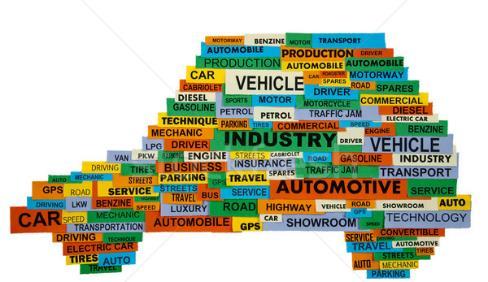
| РАССМОТРЕНО: на заседании предметно-цикловой комиссии общеобразовательных дисциплин ПРОТОКОЛ № от « » ___________ 2020г. Председатель ПЦК Поспелова Т.В. | Составили: преподаватели иностранных языков Воронина М.В., Булкина Т.А. |
Красные Баки
2020
Lesson 1
Safety first
№1. Read and translate the text:
The main causes of accidents in the workplace are not dramatic fires and explosions, but very ordinary accidents that can be easily prevented by workers looking out for their own safety and the safety of others. Many of these accidents are minor, but some cause death or serious injury. The most common cause of accidents is from slips, trips, and falls, followed by lifting and carrying.
Accidents involving cuts, burns, dropped objects, falling from height, and collisions are also common but often avoidable. The main preventable measure is safety training. All employees in the oil and gas industry go through regular safety training courses to encourage a strong safety culture. For hazardous areas, employees will be issued with Personal Protective Equipment (PPE) which must be worn in signed areas. Safety boots, hard hats, overalls, gloves, and safety glasses are usually a standard issue. In addition, ear protectors and special trades' equipment such as welding shields, goggles, and gloves will be issued. Safety signage has to be Signs are classified with different shapes and colours to denote whether they are mandatory, warnings, or giving information. Most signs are independent of language and use standard symbols as ideograms. The meaning of some of these signs is not always immediately obvious and so they should be learnt. Following information signs is practised in fire drills where workers must follow signs to safe areas. Those working offshore will attend special courses on helicopter escape, use of life jackets and survival craft, and escape through smoke.
There are often opportunities for workers to volunteer as fire officers or first aiders, and special training is given. Safety cultures are different in every country and those workers from countries with a high safety culture may not be sure how to act when they see unsafe conditions or acts where the safety culture is lower. A good guide is never to intervene unless there is imminent danger, but always to report to your supervisor or to an agreed point of contact. When workers are assigned particular tasks, it is good practice for supervisors to give toolbox talks.
These are talks at the working area usually at the beginning of a shift. Supervisors have the opportunity-to point out particular hazards and remind workers of current safety initiatives. Most tasks will require the supervisor to carry out a generic or a specific risk assessment for a task. If special hazards are involved, a task may require a Permit to Work, where special procedures may need to be followed. A permit would be required where there is the risk of exposure to petroleum vapour and a source of ignition such as a welding operation.
№2. Answer the questions:
1. What are the most common accidents in the workplace?
2. Who goes through regular safety training courses and why?
3. How are safety signage classified?
№3. Give English equivalents to the Russian words and word combinations:
Авария; взрыв; опасные зоны; спасательный жилет; безопасность; первая помощь;
источник воспламенения; серьезные травмы; каска; допуск к работе; предупреждающие знаки; коробка с инструментами.
№4. Translate the following sentences into English:
1. Необходимо получить допуск к работе специалистам газовой промышленности.
2. Безопасная обувь, каски, комбинезоны, перчатки и защитные очки являются стандартным набором по технике безопасности.
№5. Read the text and complete the table below:
Categories of safety signs
Safety signs are divided into categories according to the type of message they are intended to convey. Each category is assigned a specific format and set of colours.
Prohibition Signs
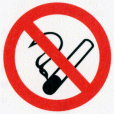 These signs should be used to convey “Do Not” type commands. For example, to indicate that smoking is not allowed or that, where a particular material reacts dangerously with water or water should not be used to extinguish a fire. In the workplace they should be used to reinforce instructions prohibiting dangerous activities. Such instructions, however, should also form part of the employees training. Signs prohibiting an activity consist of a circular red band and single diagonal cross bar descending from left to right at an angle of 45 degrees. The background should be white with the pictogram indicating the nature of the command in black.
These signs should be used to convey “Do Not” type commands. For example, to indicate that smoking is not allowed or that, where a particular material reacts dangerously with water or water should not be used to extinguish a fire. In the workplace they should be used to reinforce instructions prohibiting dangerous activities. Such instructions, however, should also form part of the employees training. Signs prohibiting an activity consist of a circular red band and single diagonal cross bar descending from left to right at an angle of 45 degrees. The background should be white with the pictogram indicating the nature of the command in black.
Warning Signs
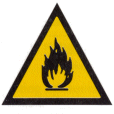 These signs should be used to make people aware of a nearby danger. For example, a flammable liquid store or a laboratory where radioactive substances are in use should have an appropriate warning sign near the entrance. These signs are required by the Health and Safety (Safety Signs and Signals) Regulations and in specific cases by the Dangerous Substances (Notification and Marking of Sites) Regulations. Signs warning of a particular hazard consist of a black band in the shape of an equilateral triangle. The background within the band should be yellow with the pictogram indicating the type of hazard in black positioned centrally on the sign.
These signs should be used to make people aware of a nearby danger. For example, a flammable liquid store or a laboratory where radioactive substances are in use should have an appropriate warning sign near the entrance. These signs are required by the Health and Safety (Safety Signs and Signals) Regulations and in specific cases by the Dangerous Substances (Notification and Marking of Sites) Regulations. Signs warning of a particular hazard consist of a black band in the shape of an equilateral triangle. The background within the band should be yellow with the pictogram indicating the type of hazard in black positioned centrally on the sign.
Mandatory Signs
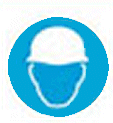 These signs should he used to indicate actions that must be carried out in order to comply with statutory requirements. For example, self-closing fire doors that must be kept closed to comply with the fire risk assessment should be labeled with “FIRE DOOR KEEP SHUT” signs. An area of a construction site where hard hats should be worn should also have appropriate signs at the entry points. It should he noted that the Health and Safety (Safety Signs and Signals) Regulations do not apply to mandatory fire instructions, but apply to health and safety mandatory signs where pictograms are required. The minimum regulatory requirement is for the sign to include an appropriate pictogram. There are no pictograms for fire safety instruction signs and although mandatory in the UK through inclusion in the requirements of workplace fire assessments, such signs are not considered as health and safety signs within these Regulations. Thus the familiar white on blue fire safety mandatory signs using text only will remain in place and will not have to be changed.
These signs should he used to indicate actions that must be carried out in order to comply with statutory requirements. For example, self-closing fire doors that must be kept closed to comply with the fire risk assessment should be labeled with “FIRE DOOR KEEP SHUT” signs. An area of a construction site where hard hats should be worn should also have appropriate signs at the entry points. It should he noted that the Health and Safety (Safety Signs and Signals) Regulations do not apply to mandatory fire instructions, but apply to health and safety mandatory signs where pictograms are required. The minimum regulatory requirement is for the sign to include an appropriate pictogram. There are no pictograms for fire safety instruction signs and although mandatory in the UK through inclusion in the requirements of workplace fire assessments, such signs are not considered as health and safety signs within these Regulations. Thus the familiar white on blue fire safety mandatory signs using text only will remain in place and will not have to be changed.
Fire instruction notices, which list actions that occupants must carry out in the event of a fire are, by convention, written as white text on a blue background but not in the circular format. The colours are used to convey the mandatory nature of the instructions but because of the amount of text normally needed a rectangular format is used. The general mandatory sign of a white exclamation mark on a blue circle may be used in conjunction with a fire instructions notice.
Signs indicating mandatory requirements consist of a blue circle with the pictogram or text in white positioned centrally.
Safe Condition Signs
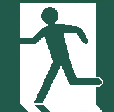 These signs should he used to indicate escape routes, emergency exits, first aid equipment, emergency showers and the others. Safe condition signs consist of a green rectangle or square with the pictogram or text in white positioned centrally. In the same way as for mandatory signs some UK fire safety signs in this category are not required by the Health and Safety (Safety Signs and Signals) Regulations for example “PUSH BAR TO OPEN” is not required to comply and there is no pictogram with that meaning. Such signs are still needed for compliance with other UK legislation.
These signs should he used to indicate escape routes, emergency exits, first aid equipment, emergency showers and the others. Safe condition signs consist of a green rectangle or square with the pictogram or text in white positioned centrally. In the same way as for mandatory signs some UK fire safety signs in this category are not required by the Health and Safety (Safety Signs and Signals) Regulations for example “PUSH BAR TO OPEN” is not required to comply and there is no pictogram with that meaning. Such signs are still needed for compliance with other UK legislation.
Exit Signs
In order to comply with the requirements of the Building Regulations, every doorway or other exit providing access to a means of escape, other than exits in ordinary use, should be provided with an exit sign. Installation of signs conforming to British Standard will satisfy both the Building Regulations and the Health and Safety (Safety Signs and Signals Regulations). In general, these Regulations will not require any changes where existing fire safety signs containing symbols comply Fire safety signs, notices and graphic symbols.
Provision of exit signs
The regulations place a duty on employers to ensure that safety signs are provided in circumstances where the risk to the health and safety of employees, identified through the risk assessment requirement contained with the Management of Health and Safety at Work Regulations cannot be entirely, engineered or managed out of the workplace. It should be noted that the Regulations do not require safety signs to be used where there are no significant risks to the health and safety of employees. The issue which then requires to be resolved is whether it is necessary to indicate exits with signs. In arriving at a decision the fundamental issue which will underpin the process is whether the risk of injury or death to employees from a fire within a particular premises is deemed to be significant enough to warrant the provision of signs indicating fire exit routes and final exits. If it is deemed that the risk is not significant then there is no need to install the signs. Thus, for example, a small, single storey premises with one clearly visible exit should not require a fire exit sign because it would be obvious to staff that the door is their only means of access and hence there should not be a significant risk to their health and safety from fire by not signing the door as an exit. However, those buildings with more complex internal layouts incorporating multiple exits, some of which may not be readily visible nor frequently used, or where large numbers of the public congregate, will require fire exit signs. They should be complete with directional arrows, if there is a significant risk of individuals not being able to find their way to a place of safety in the event of a fire.
Supplementary information signs
These are signs used to provide additional information. In the Health and Safety (Safety Signs and Signals) Regulations these are confined to directional arrows. However, they include various text messages as well as arrows under the description of supplementary signs. To comply with the Regulations where a direction indication is needed the minimum requirement is for a supplementary sign in the form of an arrow. The supplementary text messages in the British Standard such as “Water as an extinguishing agent prohibited” will be acceptable under the regulations only if accompanied by an appropriate pictogram. This is entirely consistent with the philosophy of the British Standard. Supplementary signs consist of a square or rectangle in the appropriate colour with the pictogram or text in white and positioned centrally. The colour should be green where the information supplements a safe condition sign, red where It supplements a fire equipment sign or yellow to supplement a warning sign.
There is a minor conflict between the British Standard and the regulations on the permitted colour of supplementary signs. They allow text to be in black on a white background or white on the appropriate colour. The colour alternative is the only option permitted in the Regulations. Thus the Regulations can be complied with by adhering to this option in the Standard.
Fire Fighting Equipment Signs
 These signs are used to mark the location of firefighting equipment and fire alarm activation points. However, where possible, fire equipment should be positioned where it is clearly visible. Red to be used as the identifying colour for firefighting equipment. If the equipment itself is red this will satisfy the requirement. Where it is not red then highlighting the position of firefighting equipment by colouring background behind the equipment red may be enough to comply.
These signs are used to mark the location of firefighting equipment and fire alarm activation points. However, where possible, fire equipment should be positioned where it is clearly visible. Red to be used as the identifying colour for firefighting equipment. If the equipment itself is red this will satisfy the requirement. Where it is not red then highlighting the position of firefighting equipment by colouring background behind the equipment red may be enough to comply.
Fire equipment signs consist of a red rectangle or square with the pictogram in white positioned centrally on the sign.
Summary of Safety Signs (you have pictograms, describe them)
| Type | Shape | Colour | Pictograms |
| | |
| 
|
|
|
|
| 
|
|
|
|
| 
|
|
|
|
| 
|
|
|
|
| 
|
|
|
|
| 
|
№6. Read and learn the information “Safety signs: colours and shapes”
Safety signs are very important because the oil and gas industry has many hazards. Hazards are possible dangers like electricity, chemicals, hot things, gas, machines, noise, falling objects, and slippery surfaces. There are four main kinds of safety signs:
These signs warn us about hazards.
These signs tell us “You must wear or do the thing in the picture”
These signs usually have a red band across them. They tell us we must not do things.
These signs give information about safety.
Lesson 2
МОДАЛЬНЫЕ ГЛАГОЛЫ
№1. Study the information:
| Модальный глагол | Значение |
| Can / could | 1) умение, способность 2) возможность, разрешение 3) просьба в вежливой форме |
| to be able (to) | физическая способность или возможность |
| must | 1) обязанность, долженствование, твёрдая необходимость, логическое заключение 2) приказание или совет 3) выражение предположения, которое говорящий считает вполне правдоподобным |
| to have (to) | вынужденность, обязанность |
| to be (to) | долженствование в силу договорённости или плана |
| should | 1) обязанность (менее сильная, чем must) 2) совет, рекомендация 3) упрёк, порицание, сожаление |
| ought (to) | 1) моральный долг 2) настоятельный совет, строгая рекомендация 3) сожаление |
| shall | 1) намерение 2) предложение |
| to be obliged (to) | быть обязанным |
| to be allowed (to) | разрешение |
| may | 1) разрешение, при not – запрещение 2) предположение с сомнением |
| need | необходимость |
| dare | сметь, посметь (в вопросе и отрицании – не сметь), дерзнуть, осмелиться |
№2. Read and translate these parts of your body. Write the sentences using the words and modal verbs:
example: Our ears can hear.
Ears eyes face feet fingers hands head
№3. Write and translate the personal protection equipment (PPE). Complete the sentences below:
Ear protectors Hard hat Face guard
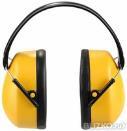
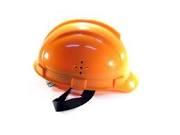
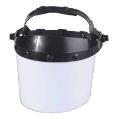
Boots Goggles Gloves
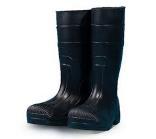

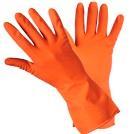
Safety harness respirator

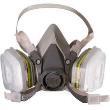
1. A hard hat should be used for protecting your…
2. A face guard should be used for protecting your…
3. Boots should be used for protecting your…
4. …. should be used for protecting your ears from noise
5. .... should be used for protecting your hands
6. .... should be used for protecting your eyes
7. A …. should be used for protecting you from smoke and dangerous fumes
8. A …. should be used for protecting you from a fall
№4. Match the signs with the descriptions given below. Make up the sentences using modal verbs:
1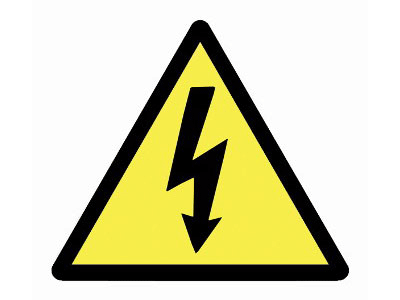 2
2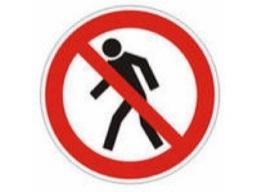 3
3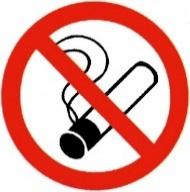 4
4  5
5 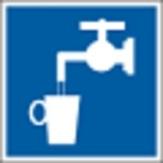 6
6
7 8 9 10 11 12
13 14 15
Wear goggles
Don’t smoke here
This way to the emergency exit
Wear ear protectors
Don’t eat here
Danger! High voltage!
Fire exit
Wear boots
Wear respirator
Do not enter
Danger! Radiation!
Danger! Overhead crane!
This way to the pharmacy
Do not touch!
Drinking water is here
№5. Read the health and safety officer talking to a team of welders and pipe-fitters
H - health and safety officer
P1- pipe-fitter1
P2- pipe-fitter2
P3- pipe-fitter3
H: There are six main hazards for welders. Can you name them?
P1: Electric shock
H: Right. So what do we do?
P2: Weld dry. Don’t stand in water.
P3: And wear leather shoes and always wear gloves.
H: Right. we also check our equipment often. We switch off equipment when we are not using it. Another hazard?
P3: Gas cylinders. Gas cylinders can explode.
H: Correct. So how do we stay safe?
P1: Don’t drop them!
H: Right. How?
P2: Always secure the cylinders. And always move them safely.
H: Ok. And three steps before moving?
P2: Close the valve, remove the regulator, and replace the valve cap. Then use a cart to move a cylinder.
H: Right. And always close the valve when you go on break or at the end of the day. Also, you should always wear your safety glasses when you’re working. OK, that’s two hazards. What else?
P3: Arc rays. They burn eyes and skin
H: Precautions?
P1: Cover skin and eyes. Never look at the spark. Always use a welder’s helmet and gloves.
H: Those things also protect us from arc sparks. Hot sparks can burn clothes and start fires. So wear your protective clothes. Cotton trousers are good. And no pockets! Pockets catch sparks. Another hazard?
P2: Smoke. Smoke from welding can be dangerous.
P1: So we use respirators. And we always know the material we’re welding.
H: That’s right. And indoors, we always use the ventilation system. OK, there’s one more hazard on my list. Trips and falls You work in confined spaces, sometimes underground, sometimes high u. So what do you do?
P3: Always think about where you are. Wear a safety harness.
P2: Keep the work area clean and tidy.
H: Right
№6. Number the welding hazards in the order you hear them
Gas cylinders d. smoke
Arc sparks e. electric shock
Arc rays f. trips and falls
№7. Match each hazard (a-f) in 6 above with a precaution
Weld dry.
Always move it safely.
Cover up skin and eyes.
No pockets!
Know the material we’re welding.
Keep the work area clean and tidy.
№8. Read again. Tick the pieces of safety equipment you hear.
Safety glasses 7. Respirator
Welder’s helmet 8. Boots
Face guard 9. Ventilation system
Gloves 10. Ear protectors
Cotton trousers 11. Safety harness
Welding jacket 12. Leather shoes
Lesson 3
Mechanics Workshop Safety
№1. Read and translate the text:
Whether you tinker in classic car restoration or own a full auto shop, safety in the workshop is always of the utmost importance. Keeping yourself, your friends, your assistants, your customers and any number of other people safe amongst the many dangers of motor vehicle repair is the most important principle in any workshop. So, to help you and yours stay safe, let’s review some shop safety tips.
Wear Proper Clothing
With the many moving parts that exist in every automobile, it is extremely important to wear clothing that fits properly. Clothing that is too loose can get caught in the car’s mechanics, while clothing that is too tight can restrict your movements and responses in dangerous situations. Instead, it is advisable to wear fitted clothing.
In addition, jewelry should never be worn when working with mechanical equipment of any kind, including when working with automobiles. Necklaces, chains, bracelets and earrings can all easily be caught in a moving part, and in some situations, the injuries caused by jewelry incidents may call for amputation or may cause death.
Dangling jewelry of all kinds should therefore be banned from the shop. Also, even simple wedding bands can be caught in machinery (although this is not as likely as with dangling jewelry), so a ban on all jewelry may be considered.
Wear Protective Gear
Drips, spills and splatters are common in auto shops, so protective gear is often the best way to ensure safety. Protective eye gear should be worn anytime a substance could injure a person’s eyes, and gloves should be worn when working with sharp materials, like newly cut or rusty steel.
Other protective gear that may come in handy include masks. Painter’s masks can help decrease the chance of inhalation injury during auto body painting, and a welder’s mask must be worn when welding, to protect the welder’s eyes from arc injuries. Additionally, simple inhalation masks may be suggested during some sanding and cleaning tasks.
Use the Proper Lifts
One of the very most important rules in any shop is to properly lift your vehicle. With literally tons of steel hovering above a worker, supporting a car during a suspension-based task can mean the difference between life and death.
Professional shops may wish to purchase heavy-duty lifts or create a below-ground mechanic’s room to better protect employees. Small shops and hobby restorers, though, may not be able to afford the best in safety gear, so ensuring that a simple jack and jack stand combo is of good quality and used properly is the next best thing.
Always follow the instructions on whatever lift you use, and if using a jack, remember to secure the wheels and put the car in park. Also, if working beneath the car, always use the jack stands to support the vehicle; never rely on the jack as support.
Automobile restoration and repair is one of the most pleasurable jobs and hobbies for countless men and women. If you are in that number, remember to stay safe, watch your clothing/protective gear and lift properly.
№2. The pictures are from a safety manual for drilling crews. Which person is …
1. wearing loose clothes?
2. standing under a load?
3. running up or down steps?
4. eating near chemicals?
5. handling chemicals without PPE?
6. walking below people working?
7. standing between a wall and a moving load?
8. using a broken tool?
9. climbing without a safety harness?
10. doing the right thing: lifting correctly and keeping his back straight?
№3. Say what might happen in each situation?
Example:
Machines might catch his loose clothes and injure him.
№4. You work in a drilling crew. You are looking after a new person in the crew. Take turns advising him.
Example
You shouldn’t wear loose clothes because machines might catch them.
№5. What safety precautions do you take when you drive a car, or ride a motorcycle or bicycle?
№6. Study the information: Personal protective equipment is the first step to your safety in the plant and answer the questions:
Head protection. We are to put on a hard hat to prevent our head from any kind of injuries.
Eye & Face Protection. If you don’t have the safety mask or safety glasses while performing some special kinds of work you are in danger. Pieces of glass for example might hurt your eyes or face. You must wear safety glasses!
Hearing Protection. Earclips help you to reduce the influence of any noise on your hearing. You must wear ear clips while entering the site!
Respiratory Protection. The respirator, half mask, gas-mask protect your respiratory organs from influence of different harmful substances. You must wear the respirator when you go to the batch house!
Hand Protection. Safety gloves protect your hands from cuts and injuries while working with very hot or cold surfaces. You must wear safety gloves when you perform any repair near the furnace!
Foot Protection. Safety shoes protect your feet and legs from injuries. When you at the site you must wear safety shoes!
- What does the abbreviation PPE mean?
- What protective clothes do you know?
№7. Choose the correct words to complete each sentence and translate them:
We switch off equipment/an equipment
There are six main hazard/ hazards for welders
Gas cylinder / cylinders can explode.
Never look at spark/ the spark.
Hot sparks can burn clothes / a clothes and start fires.
Smoke/ A smoke from welding can be dangerous.
Use cart / a cart.
We always know material/ the material we’re welding.
Cover skin/ a skin and eyes.
Don’t stand in water / a water.
Lesson 4
ROAD SAFETY
№1. Translate the words:
safety, safe; crash, to crash, to crash through, to crash down; injury, to injure, injurious; to prevent, prevention, preventive; danger, dangerous, to be in danger; fatal, fatality, fatalist, fatalistic, fatalism; to increase, increase, to be on the increase; fail, failure, failing; pavement, to pave, paver; acceleration, to accelerate, accelerating, accelerator, accelerant; removal, move, movement, to remove, removed.
№2. Translate the antonyms:
acceleration - deceleration; increased - decreased; forgiving - unforgiving; discouraged - encouraged; fatal - non-fatal; to reduce - to increase; certain - uncertain; modern - ancient; poor - rich; young - old; broad - narrow; increase - minimize; forgiving - unforgiving.
№3. Translate synonyms:
to assess - to estimate; motorway - freeway; cat’s eyes - botts dots; footway - sidewalk; cambered - crowned; fatality - death; rumble strips - tone bands.
№4. Translate the word-combinations:
roadside units; raised rib markings; rumble strips; tone-brand; lane marker; retro-reflective; Fitch barriers; guard rails; light poles; passenger compartment; sight distance; road sight clear zones; interventions areas; traffic calming; road users; eye contact; travel-limited generation; tire-traction; standing water; strict furniture; impact energy; limited access highways.
№5. Read the text and answer the questions:
Road safety aims to reduce the harm (deaths, injuries, and property damage) resulting from crashes of road vehicles. Harm from road-traffic crashes is greater than that from all other transportation modes (air, sea, space, etc.) combined. Road safety deals exclusively with road-traffic crashes — how to reduce their number and their consequences.
Background. Road-traffic crashes are one of the world’s largest public health and injury prevention problems. The problem is all the more acute because the victims are overwhelmingly healthy prior to their crashes. According to the World Health Organization more than a million people are killed on the world’s roads each year.
Types of harm. Fatality. Conceptually, the clearest type of harm in a road traffic crash is death — or a fatality. However, the definition of a road-traffic fatality is far more complicated than a casual thought might indicate, and involves many essentially arbitrary criteria. In the United States, for example, the definition used in the Fatality Analysis Reporting System (FARS) run by the NHTSA is a person who dies within 30 days of a crash on a US public road involving a vehicle with an engine, the death being the result of the crash. In America therefore, if a driver has a non-fatal heart attack that leads to a road-traffic crash that causes death, that is a road-traffic fatality.
Injuries. How many road-traffic crash injuries occur in the world? The answer to this question is highly uncertain. Whether an injury is reported may depend upon compensation and medical procedures as well as on the amount of harm.
Property Damage. Data for property damage crashes is even more uncertain than for injuries. In some jurisdictions the criterion for reporting is damage exceeding some monetary amount specified by statute. Because of inflation, this requirement may include more and more minor crashes as time passes, until the amount is abruptly changed, thereby reducing the reported number of crashes. Drivers generally report single-vehicle property damage crashes only if they see some benefit in reporting them, regardless of legal obligations.
Crash Rates. The safety performance of roadways is almost always reported as rates. That is, some measure of harm (deaths, injuries, or property damage) divided by some indicator of exposure to the risk of this harm. Simple counts are almost never used. The annual count of fatalities is a rate, namely, the number of fatalities per year. Common rates related to road-traffic fatalities include the number of deaths per capita, per registered vehicle, per licensed driver, or per vehicle mile traveled. There is no one rate that is superior to others in any general sense. The rate to be selected depends on the question being asked — and often also on what data are available. What is important is to specify exactly what rate is measured and how it relates to the problem being addressed.
Defining the problem. The standard measures used in assessing road safety interventions are fatalities and Killed or Seriously Injured (KSI) rates, usually per billion passenger kilometers. In the United States, crashes per million vehicle miles is typically used for road safety.
Speed is a key goal of modern road design, but impact speed affects the severity of injury to both occupants and pedestrians. For occupants, Joksch (1993) found the probability of death for drivers in multi-vehicle accidents increased as the fourth power of impact speed (often referred to by d the mathematical term δv (“delta V”), meaning change in velocity). Injuries are caused by sudden, severe acceleration (or deceleration), this is difficult to measure. However, crash reconstruction techniques can be used to estimate vehicle speeds before a crash. Therefore, the change in speed is used as a surrogate for acceleration.
Interventions. One method is to post special safety signage on the most dangerous highways. Interventions take many forms. Contributing factors to highway crashes may be related to the driver (such as driver error, illness or fatigue), the vehicle (brake, steering, or throttle failures) or the road itself (lack of sight distance, poor roadside clear zones, etc.). Interventions may seek to reduce or compensate for these factors, or reduce the severity of crashes that do occur. A comprehensive outline of interventions areas can be seen in Management systems for road safety.
Road design. On neighborhood roads where many vulnerable road users, such as pedestrians and bicyclists (both young and old) can be found, traffic calming can be a tool for road safety. Shared space schemes, which rely on human instincts and interactions, such as eye contact, for their effectiveness, and are characterized by the removal of traditional traffic signals and signs, and even by the removal of the distinction between carriageway (roadway) and footway (sidewalk), are also becoming increasingly popular. Both approaches can be shown to be effective.
Outside neighborhood roads, design features are added to increase motorized safety and mobility. These features come at increasing costs; costs which include monetary amounts, decreased or discouraged usage by non-motorized travelers, as well as aesthetics. Benefits include a broader spectrum of occupational, cultural and entertainment options than enjoyed by more travel-limited generations.
At the other end of the spectrum from neighborhood roads are motorways, which may be called freeways, limited access highways, Autobahnen, Interstates or other national names. Motorways have the best engineered road features, limited access and minimize opportunities for conflict so are typically the safest roads per mile traveled and offer better fuel economy despite higher average speeds.
Better motorways are banked on curves in order to reduce the need for tiretraction and increase stability for vehicles with high centers of gravity. Most roads are cambered (crowned), that is, made so that they have rounded surfaces, to reduce standing water and ice, primarily to prevent frost damage but also increasing traction in poor weather. Some sections of road are now surfaced with porous bitumen to enhance drainage; this is particularly done on bends.
Most street furniture is now designed to absorb impact energy and minimize the risk to the occupants of cars, and bystanders. For example, most side rails are now anchored to the ground, so that they cannot skewer a passenger compartment, and lightest poles are designed to break at the base rather than violently stop a car that hits them. Some street furniture is designed to collapse on impact. Highways authorities have also removed trees in the vicinity of roads; while the idea of “dangerous trees” has attracted a certain amount of skepticism, unforgiving objects such as trees can cause severe damage and injury to any errant road users.
The ends of some guard rails on high-speed highways in the United States are protected with impact attenuators, designed to gradually absorb the kinetic energy of a vehicle and slow it more gently before it can strike the end of the guard rail head on, which would be devastating at high speed. Several mechanisms are used to dissipate the kinetic energy. Fitch Barriers, a system of sand-filled barrels, uses momentum transfer from the vehicle to the sand. Many other systems tear or deform steel members to absorb energy and gradually stop the vehicle.
Road hazards and intersections in some areas are now usually marked several times, roughly five, twenty and sixty seconds in advance so that drivers are less likely to attempt violent maneuvers.
Most road signs and pavement marking materials are retro-reflective, incorporating small glass spheres or prisms to more efficiently reflect light from vehicle headlights back to the driver’s eyes.
Lane markers in some countries and states are marked with Cat’s eyes or Botts dots, bright reflectors that do not fade like paint. Bolts dots are not used where it is icy in the winter, because frost and snowplows can break the glue that holds them to the road, although they can be embedded in short, shallow trenches carved in the roadway, as is done in the mountainous regions of California.
In some countries major roads have “tone bands” impressed or cut into the edges of the legal roadway, so that drowsing drivers are awakened by a loud hum as they release the steering and drift off the edge of the road. Tone bands are also referred to as “rumble strips,” owing to the sound they create. An alternative method is the use of “Raised Rib” markings, which consists of a continuous line marking with ribs across the line at regular intervals. They were first specially authorized for use on motorways as an edge line marking to separate the edge of the hard shoulder from the main carriageway. The objective of the marking is to achieve improved visual delineation of the carriageway edge in wet conditions at night. It also provides an audible/vibratory warning to vehicle drivers, should they stray from the carriageway, and run onto the marking.
The U.S. has developed a prototype automated roadway, to reduce driver fatigue and increase the carrying capacity of the roadway. Roadside units participating in future Wireless vehicle safety communications networks have been studied.
There is some controversy over the way that the motor lobby has been seen to dominate the road safety agenda. Some road safety activists use the term “road safety” (in quotes) to describe measures such as removal of “dangerous” trees and forced segregation of the vulnerable to the advantage of motorized traffic. Orthodox “road safety” opinion fails to address what Adams describes as the top half of the risk thermostat, the perceptions and attitudes of the road user community.
1. What does road safety aim to?
2. What is the clearest harm in a road-traffic crash?
3. When is death considered to be a road-traffic fatality in America?
4. What property damage crashes do drivers generally report?
5. What do common rates related to road-traffic fatalities include?
6. What is a key goal of modern road design?
7. What forms do interventions take?
8. What measures can be taken to increase safety on the roads?
№6. Match the definitions to the terms:
1) raised ribs a) have rounded surfaces
2) freeways b) is designed to collapse on impact
3) carriageway c) consist of a continuous line marking with ribs
across the line at regular intervals
4) street furniture d) roadway
5) cambered roads e) limited access highways
Lesson 5
Грамматические упражнения
№1. Choose the correct form of the word in brackets:
Example: You need to widen it by another two metres. (wide)
a) How …. is the tank? (wide)
b) What’s the …. of the room? (wide)
c) How …. is the axle? (long)
d) Can you …. this workbench? (long)
e) I think we need to adjust the …. of the shelves. (long)
f) Do you know how …. the reservoir is? (deep)
g) Please, make sure the tank is the correct …. . (deep)
h) I can’t reach that shelf. It’s too …. (high)
i) We might need to increase the …. of the new shed. (high)
№2. Complete the sentences using words below:
loosen, tape, stored, round, workbench, check, stock, facilities
1. I’m afraid we don’t have that item in …
2. That makes a total of 59 897 tonnes. Say, 60 000 tonnes if we …. it up to the nearest thousand.
3. Please, don’t take anything from the stores room today. I’m trying to do a stock ….
4. This is too tight, could you …. it a bit?
5. Where are the chemicals ….?
6. The new workshops will have better ….. .
7. Don’t leave the tools lying on the …. ! Put them away.
8. Have you seen my…. measure? I think I’ve lost it.
№3. Match the two parts of the sentences:
| 1. Have you tried … | a. … out of stock |
| 2. I’ll order … | b. … by about 30 cm? |
| 3. It’s small, round and … | c. … new tank? |
| 4. We carry out … | d. … using a pair of pliers? |
| 5. Can you widen it … | e. … another one for you. |
| 6. I’m afraid they’re … | f. … made of plastic. |
| 7. I can install it … | g. … most repairs ourselves. |
| 8. How deep is the … | h. … as soon as it arrives. |
№4. Translate the sentences, write out the modal verbs:
1. Worker s have a duty to take care of their own health and safety and that of others who may be affected by your actions at work.
2. Workers must co-operate with employers and co-workers to help everyone meet their legal requirements.
3. For more details on employers and your own responsibilities in law you can read “Health and safety law: What you need to know”
4. Decide what could harm you in your job and the precautions to stop it. This is part of risk assessment.
5. Free of charge, give you the health and safety training you need to do your job.
6. The engine must be a rigid structure.
7. Sometimes the camshaft may be carried on the cylinder head.
8. We can divide the mechanics of a car into seven groups.
9. If you must use tools from the other system, refer to a table of conversion.
10. We couldn’t stop because the brakes failed (не работали).
№5. Translate the sentences and underline the modal verbs:
1. Может быть, он занят.
2. Возможно, мой брат отремонтировал машину.
3. Не может быть, что он механик.
4. Он не мог починить машину, потому что автомастерская была закрыта.
5. Ей следует слушать советы механика.
6. Он не должен был так грубо разговаривать.
7. Могу я курить здесь?
8. Следует мне починить тормоза?
9. Должны мы проверить машину?
Texts for supplementary reading
All workers are entitled to work in environments where risks to their health and safety are properly controlled. Under health and safety law, the primary responsibility for this is down to employers.
Worker s have a duty to take care of their own health and safety and that of others who may be affected by your actions at work. Workers must co-operate with employers and co-workers to help everyone meet their legal requirements.
As a worker, if you have specific queries or concerns relating to health and safety in your workplace, talk to your employer, manager or supervisor or a health and safety representative. For more details on employers and your own responsibilities in law you can read “Health and safety law: What you need to know”.
All workers have a right to work in places where risks to their health and safety are properly controlled. Health and safety is about stopping you getting hurt at work or ill through work. Your employer is responsible for health and safety, but you must help.
What employers must do for you?
Decide what could harm you in your job and the precautions to stop it. This is part of risk assessment.
In a way you can understand, explain how risks will be controlled and tell you who is responsible for this.
Consult and work with you and your health and safety representatives in protecting everyone from harm in the workplace.
Free of charge, give you the health and safety training you need to do your job.
Free of charge, provide you with any equipment and protective clothing you need, and ensure it is properly looked after.
Provide toilets, washing facilities and drinking water.
Provide adequate first-aid facilities.
Have insurance that covers you in case you get hurt at work or ill through work. Display a hard copy or electronic copy of the current insurance certificate where you can easily read it.
Work with any other employers or contractors sharing the workplace or providing employees (such as agency workers), so that everyone’s health and safety is protected.
What you must do:
1. Follow the training you have received when using any work items your employer has given you.
2. Take reasonable care of your own and other people’s health and safety.
3. Co-operate with your employer on health and safety.
4. Tell someone (your employer, supervisor, or health and safety representative) if you think the work or inadequate precautions are putting anyone’s health and safety at serious risk.
Health and Safety Published by the Health and Safety Executive.
Employer's responsibilities
Under the law employers are responsible for health and safety management. The following provides a broad outline of how the law applies to employers.
It is an employer's duty to protect the health, safety and welfare of their employees and other people who might be affected by their business. Employers must do whatever is reasonably practicable to achieve this.
This means making sure that workers and others are protected from anything that may cause harm, effectively controlling any risks to injury or health that could arise in the workplace.
Employers have duties under health and safety law to assess risks in the workplace. Risk assessments should be carried out that address all risks that might cause harm in your workplace.
Employers must give you information about the risks in your workplace and how you are protected, also instruct and train you on how to deal with the risks. Employers must consult employees on health and safety issues. Consultation must be either direct or through a safety representative that is either elected by the workforce or appointed by a trade union.
The main legislation providing for the health and safety of people in the workplace are the Safety, Health and Welfare at Work Acts. They apply to all employers, employees (including fixed-term and temporary employees) and self-employed people in their workplaces. The Acts set out the rights and obligations of both employers and employees and provides for substantial fines and penalties for breaches of the health and safety legislation.
Employer’s duties
The employer has a duty to ensure the employees’ safety, health and welfare at work as far as is reasonably practicable. In order to prevent workplace injuries and ill health the employer is required, among other things, to:
Provide and maintain a safe workplace which uses safe plant and equipment
Prevent risks from use of any article or substance and from exposure to physical agents, noise and vibration
Prevent any improper conduct or behaviour likely to put the safety, health and welfare of employees at risk
Provide instruction and training to employees on health and safety
Provide protective clothing and equipment to employees
Appointing a competent person as the organisation’s Safety Officer
Employees’ duties
The duties of employees include the following:
To take reasonable care to protect the health and safety of themselves and of other people in the workplace
Not to engage in improper behaviour that will endanger themselves or others
Not to be under the influence of drink or drugs in the workplace
To undergo any reasonable medical or other assessment if requested to do so by the employer
To report any defects in the place of work or equipment which might be a danger to health and safety
Risk assessment and safety statement
Every employer is required to carry out a risk assessment for the workplace which should identify any hazards present in the workplace, assess the risks arising from such hazards and identify the steps to be taken to deal with any risks.
The employer must also prepare a safety statement which is based on the risk assessment. The statement should also contain the details of people in the workforce who are responsible for safety issues. Employees should be given access to this statement and employers should review it on a regular basis.
Protective equipment and measures
The employer should tell employees about any risks that require the wearing of protective equipment. The employer should provide protective equipment (such as protective clothing, headgear, footwear, eyewear, gloves) together with training on how to use it, where necessary. An employee is under a duty to take reasonable care for his/her own safety and to use any protective equipment supplied. The protective equipment should be provided free of charge to employees if it is intended for use at the workplace only. Usually, employees should be provided with their own personal equipment.
The Regulations cover various means of communicating health and safety information. These include the use of illuminated signs, hand and acoustic signals, e.g. fire alarms, spoken communication and the marking of pipe work containing dangerous substances. These are in addition to traditional signboards such as prohibition and warning signs. Fire safety signs, i.e. signs for fire exits and fire-fighting equipment are also covered.
They require employers to provide specific safety signs whenever there is a risk that has not been avoided or controlled by other means, e.g. engineering controls and safe systems of work. Where a safety sign would not help to reduce that risk, or where the risk is not significant, there is no need to provide a sign. The regulations, where necessary, require the use of road traffic signs within workplaces to regulate road traffic and also require employers to maintain the safety signs which are provided by them, explain unfamiliar signs to their employees and tell them what they need to do when they see a safety sign. The Regulations apply to all places and activities where people are employed, but exclude signs and labels used in connection with the supply of substances, products and equipment or the transport of dangerous goods.
Pictograms
The regulations require all signs should use graphic symbols or pictographs to convey its message but it does not prohibit the use of supplementary text. It indicates the intrinsic features required and some are indicated below,
The shape and colour’s of signboards are set out, in accordance with their specific object (signboards indicating a prohibition, a warning, a mandatory action, an escape route, an emergency or fire-fighting equipment).
Pictograms must be as simple as possible and should contain only essential details.
The pictograms used may be slightly different from or more detailed, provided that they convey the same meaning and that no difference or adaptation obscures the meaning.
The dimensions and colorimetric and photometric features of signboards must be such that they can be easily seen and understood.
Know your measurements
Fasteners and tools use imperial measurements or metric, and knowing the difference is important. It prevents you from rounding off a fastener, damaging tools, or causing injury. If you don't know an item's size, use a micrometer or other caliper to measure it. Check centimeters or millimeters for metric tools. Look at inches for imperial tools. Volume and weight are also very different in the two systems. Using quarts when a formula calls for liters is very dangerous. A cubic inch, is totally different from a cubic meter. For weights, a pound cannot substitute for a kilogram. Always pay close attention to which system is required. If you must use tools from the other system, refer to a table of conversion.








 These signs should be used to convey “Do Not” type commands. For example, to indicate that smoking is not allowed or that, where a particular material reacts dangerously with water or water should not be used to extinguish a fire. In the workplace they should be used to reinforce instructions prohibiting dangerous activities. Such instructions, however, should also form part of the employees training. Signs prohibiting an activity consist of a circular red band and single diagonal cross bar descending from left to right at an angle of 45 degrees. The background should be white with the pictogram indicating the nature of the command in black.
These signs should be used to convey “Do Not” type commands. For example, to indicate that smoking is not allowed or that, where a particular material reacts dangerously with water or water should not be used to extinguish a fire. In the workplace they should be used to reinforce instructions prohibiting dangerous activities. Such instructions, however, should also form part of the employees training. Signs prohibiting an activity consist of a circular red band and single diagonal cross bar descending from left to right at an angle of 45 degrees. The background should be white with the pictogram indicating the nature of the command in black. These signs should be used to make people aware of a nearby danger. For example, a flammable liquid store or a laboratory where radioactive substances are in use should have an appropriate warning sign near the entrance. These signs are required by the Health and Safety (Safety Signs and Signals) Regulations and in specific cases by the Dangerous Substances (Notification and Marking of Sites) Regulations. Signs warning of a particular hazard consist of a black band in the shape of an equilateral triangle. The background within the band should be yellow with the pictogram indicating the type of hazard in black positioned centrally on the sign.
These signs should be used to make people aware of a nearby danger. For example, a flammable liquid store or a laboratory where radioactive substances are in use should have an appropriate warning sign near the entrance. These signs are required by the Health and Safety (Safety Signs and Signals) Regulations and in specific cases by the Dangerous Substances (Notification and Marking of Sites) Regulations. Signs warning of a particular hazard consist of a black band in the shape of an equilateral triangle. The background within the band should be yellow with the pictogram indicating the type of hazard in black positioned centrally on the sign. These signs should he used to indicate actions that must be carried out in order to comply with statutory requirements. For example, self-closing fire doors that must be kept closed to comply with the fire risk assessment should be labeled with “FIRE DOOR KEEP SHUT” signs. An area of a construction site where hard hats should be worn should also have appropriate signs at the entry points. It should he noted that the Health and Safety (Safety Signs and Signals) Regulations do not apply to mandatory fire instructions, but apply to health and safety mandatory signs where pictograms are required. The minimum regulatory requirement is for the sign to include an appropriate pictogram. There are no pictograms for fire safety instruction signs and although mandatory in the UK through inclusion in the requirements of workplace fire assessments, such signs are not considered as health and safety signs within these Regulations. Thus the familiar white on blue fire safety mandatory signs using text only will remain in place and will not have to be changed.
These signs should he used to indicate actions that must be carried out in order to comply with statutory requirements. For example, self-closing fire doors that must be kept closed to comply with the fire risk assessment should be labeled with “FIRE DOOR KEEP SHUT” signs. An area of a construction site where hard hats should be worn should also have appropriate signs at the entry points. It should he noted that the Health and Safety (Safety Signs and Signals) Regulations do not apply to mandatory fire instructions, but apply to health and safety mandatory signs where pictograms are required. The minimum regulatory requirement is for the sign to include an appropriate pictogram. There are no pictograms for fire safety instruction signs and although mandatory in the UK through inclusion in the requirements of workplace fire assessments, such signs are not considered as health and safety signs within these Regulations. Thus the familiar white on blue fire safety mandatory signs using text only will remain in place and will not have to be changed. These signs should he used to indicate escape routes, emergency exits, first aid equipment, emergency showers and the others. Safe condition signs consist of a green rectangle or square with the pictogram or text in white positioned centrally. In the same way as for mandatory signs some UK fire safety signs in this category are not required by the Health and Safety (Safety Signs and Signals) Regulations for example “PUSH BAR TO OPEN” is not required to comply and there is no pictogram with that meaning. Such signs are still needed for compliance with other UK legislation.
These signs should he used to indicate escape routes, emergency exits, first aid equipment, emergency showers and the others. Safe condition signs consist of a green rectangle or square with the pictogram or text in white positioned centrally. In the same way as for mandatory signs some UK fire safety signs in this category are not required by the Health and Safety (Safety Signs and Signals) Regulations for example “PUSH BAR TO OPEN” is not required to comply and there is no pictogram with that meaning. Such signs are still needed for compliance with other UK legislation. These signs are used to mark the location of firefighting equipment and fire alarm activation points. However, where possible, fire equipment should be positioned where it is clearly visible. Red to be used as the identifying colour for firefighting equipment. If the equipment itself is red this will satisfy the requirement. Where it is not red then highlighting the position of firefighting equipment by colouring background behind the equipment red may be enough to comply.
These signs are used to mark the location of firefighting equipment and fire alarm activation points. However, where possible, fire equipment should be positioned where it is clearly visible. Red to be used as the identifying colour for firefighting equipment. If the equipment itself is red this will satisfy the requirement. Where it is not red then highlighting the position of firefighting equipment by colouring background behind the equipment red may be enough to comply.









 2
2 3
3 4
4  5
5  6
6 

















